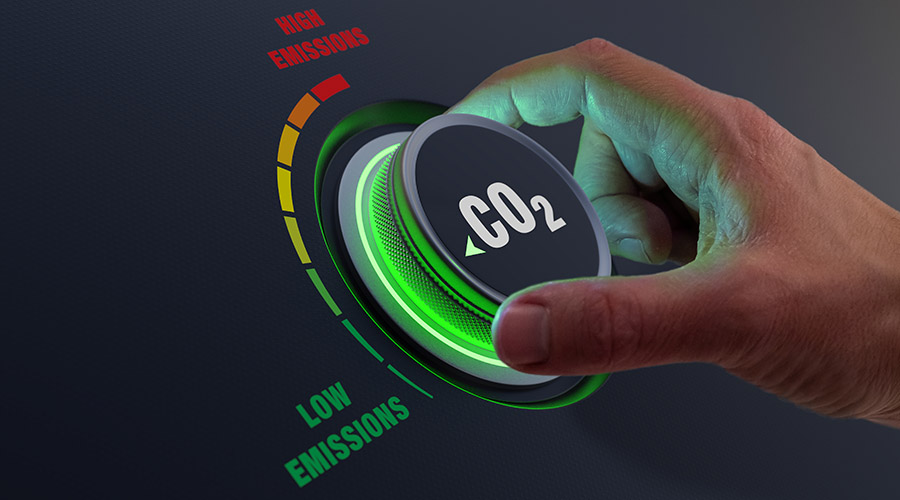As healthcare facilities continue to modernize their HVAC systems, a concern has cropped up around making them more sustainable. There are two concepts that surround this concern: Net Zero and decarbonization. Net Zero is an overall goal of reaching zero emissions usually by a set year, while decarbonization aims to transition energy sources away from carbon-based sources. In this manufacturer roundtable, Healthcare Facilities Today speaks with HVAC manufacturers about the innovations helping healthcare facilities achieve both goals.
What are some HVAC innovations that are helping healthcare facilities achieve Net Zero and decarbonization efforts?
“Considering humidity control within the broader context of the HVAC system helps optimize energy efficiency. By maintaining optimal humidity levels, HVAC systems can operate more efficiently, saving energy and reducing environmental impact. Energy management and the analysis of energy usage should also drive the selection of humidification equipment. There is variation in the performance between equipment types and between equipment brands. It is important to look at the performance data and environmental parameters to get a full understanding of what you are buying.”
— Jennifer Montville, director of marketing, DriSteem
“High performance, inverter-driven heat pumps provide year-round comfort while achieving extraordinary efficiencies and almost unlimited zoning options. An inverter controls the power to the highest energy consuming components of an HVAC system by use of a DC conversion offering a significantly higher gain in motor efficiency. Additionally, by the nature of DC motors, pulse modulation can be used to finitely control the speed and output of the motors to match the demands. In a typical system, the output is limited to a single or three speed output. An inverter, in comparison, has no practical limit.”
— Dennis Stinson, vice president of sales, Fujitsu General America, Inc.
“There are so many technologies and innovations that I’m afraid to list them all. I’ll stick to several that I think are unique or not as well known.
- High-Efficiency Heat Pumps: Heat pumps are a game-changer for healthcare facilities. They can efficiently heat and cool buildings by transferring thermal energy instead of relying solely on traditional boilers and chillers. Newer models have recently come out that make heat pumps the “hospital hero” in many situations. They can significantly reduce reliance on fossil fuels and lower emissions with extremely fast paybacks. Sometimes with the right financial structure they can be cashflow positive immediately.
- Energy Recovery Ventilators or Heat Recovery Ventilators (ERV/HRV): These units capture heat and/or moisture from outgoing exhaust air and transfer it to incoming fresh air. This preconditioning reduces the energy needed to reach desired temperatures, lowering overall energy consumption. We all know that healthcare facilities use a lot of outdoor ventilation, so it makes sense not to waste all that energy into the atmosphere through exhaust.
On the controls and digital side, many hospitals have large central utility plants that would benefit from central plant optimization. Essentially, it’s software that looks at the most optimal way to load the equipment and set the setpoints to minimize energy use and cost.
For example, every operating room should be taking advantage of a platform that can help them “set back” their systems during non-operating hours. Good systems will integrate to the surgery schedule and the BAS to generate $3,000 to $5,000 energy savings annually. Regardless of what industry you’re in or what systems you have installed, having a software platform that can help collect and visualize data and provide analytics and insights into energy consumption is a must. A BAS-agnostic system that can pull in meters (energy, water, etc.) and equipment performance data into a single platform will help hospitals meet their decarb needs as well as address rising energy costs and regulatory pressures.”
— Brian T. Estill, portfolio director – healthy buildings and sustainability, Johnson Controls
“There are several HVAC innovations that are aiding healthcare facilities in achieving Net Zero and decarbonization efforts. Here are a few examples:
- Energy-Efficient HVAC Systems: Advancements in HVAC technology have led to the development of highly energy-efficient systems. These systems use less energy to provide the same or better heating, ventilation and cooling performance. Variable speed drives, energy recovery ventilators and advanced control systems are among the innovations that increase energy efficiency and contribute to reducing carbon emissions.
- Renewable Energy Integration: Healthcare facilities are integrating renewable energy sources, such as solar panels, wind turbines or geothermal systems, into their HVAC systems. These sources generate clean energy, reducing reliance on fossil fuels for electricity consumption in HVAC operations.
- District Energy Systems: Some healthcare facilities are connecting to district energy systems, where they can access centralized heating and cooling plants that are powered by more efficient and sustainable energy sources. These systems can help healthcare facilities reduce their carbon footprint by relying on a centralized, decarbonized energy supply.
- Sustainable Systems
- Geothermal Heat Pumps: Geothermal heat pumps utilize the Earth's constant temperature to provide heating and cooling. These systems extract heat from the ground during winter and dissipate heat back into the ground during summer, significantly reducing energy consumption and carbon emissions associated with traditional heating and cooling methods.
- Heat Recovery Systems: Heat recovery systems capture, and reuse heat generated within the healthcare facility. Waste heat from processes like heating, cooling or even refrigeration can be redirected and utilized in other areas, such as water heating or preheating ventilation air, thereby reducing energy waste.
- Thermal Energy Storage
- Ice Storage: Provides demand flexibility, reliable power redundancy and assurance, and reduces carbon footprint.
- Storage Source Heat Pump: Thermal energy storage provides operational flexibility by capturing and storing reclaimed energy to heat the building efficiently and can optimize heat pump capacity.
- Electrification of Heat: the process of replacing technologies that use fossil fuels (coal, oil and natural gas) with technologies that use electricity as a source of energy.
- Energy Management Systems (also known as Building Automation Systems): Energy Management Systems enable healthcare facilities to optimize their HVAC operations according to utility operations and facility demands. Autonomous controls that use artificial intelligence (AI) to automatically identify and perform system optimization actions 24 hours a day, seven days a week.
These HVAC innovations are helping healthcare facilities reduce their energy consumption, carbon emissions, and overall environmental impact. By adopting these technologies, healthcare facilities can make significant strides toward achieving Net Zero and decarbonization goals.”
— Christy Fetsch, CEM, LEED AP, healthcare vertical market strategy leader, Trane
Jeff Wardon, Jr. is the assistant editor for the facilities market.

 The Effect of Over-Cleaning on Human Health
The Effect of Over-Cleaning on Human Health Rumored Terror Threat to Hospitals Prompts FBI Warning
Rumored Terror Threat to Hospitals Prompts FBI Warning Ground Broken on New Johns Hopkins All Children's Hospital
Ground Broken on New Johns Hopkins All Children's Hospital States Move Forward to Better Protect Senior Citizens
States Move Forward to Better Protect Senior Citizens Archer and REDA to Transform Newport Beach Building into Outpatient Center
Archer and REDA to Transform Newport Beach Building into Outpatient Center